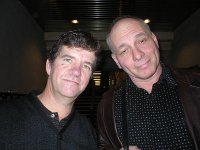DeadAim said:
Parallel English

A lot of interesting answers to the poser, all will work but with very low probablities.
I would venture to say that 99 percent of billiard players never even heard of parallel english. Try a Google search and see what happens.
That's one of the secrets of pool, you might already be using it and not even know it.

This is a routine shot for me now thanks to my teacher, I can get up the table every time with NO risk at all.
I would be interested if anyone knows what parallel english is, I have not met anyone yet who knew it by it's name.
Joe
I agree, fairly easy shot. You have my address and phone number. $500.00 says I make this shot on a normal non-shimmed table with at least good position on the 9 eight out of 10 tries (was going to say 9 out of 10 but could be a bad day).
I use the shot I'm going to be talking about (back hand english throw) any time I have a straight in shot and need to send the cue ball forward and off line or just move it laterally. (I didn't say backward because the draw version of this shot is much more difficult and risky) If the cue ball is farther away from the object ball, this becomes much more difficult.
DeadAim's post, I thought he talked about it but either he is dead wrong or he and I have our terms mixed up. I'm thinking we most likely have are terms confused. The only way to determine this is for me to define what I think is 'parallel engish' compared to 'back hand english'.
This explanation is what I understand the definitions are. If your definitions are different, that is fine, but for the purpose of this reply and to understand what I'm saying. You need to use my definition and apply your definition later.
Parallel english: The most commonly used english. This is done by moving the cue stick parallel to where it would be if you were shooting the shot straight in. This is done by moving the position of both hands to the right or left. (in this particular shot it would be to the right.) This shot sort of pushes the cue ball online, minimizing deflection. (parallel cue position, thus the name 'parallel engligh')
Back hand english: Not so commonly used. This is done by rotating the line of the cue stick around the forward hand by moving the back hand. The forward hand does not move. (extreme version which might be used for this shot, the forward hand may even move to the left a little, [opposite direction of the english]) The cue stick is not parallel to the shot. It is more of a glancing blow on the cue counting on considerable deflection. (The back hand moves and the forward hand is stationary, thus the name 'back hand english')
In the picture below the 10 ball and 11 ball represent the forward hand position not balls and the arrows represent the stick not the ball flight. These positions are little exagerated so you can see better what I'm talking about.
The brown line is the cue stick if you were shooting the 8 ball straight in (scratch shot)
The 10 ball and the green line show parallel engligh.
The 11 ball and the blue line show back hand english
I hope I explained this well enough for you all to understand. This is a great tool. As I said above, I use it all the time on straight in shots. It takes a little practice, so give it a little time. Sometimes when I do this shot I get the impression I move the back hand laterally a little at impact. Like I'm taking the cue tip across the cue ball instead of straight into it. Not sure about that, might just be a feeling. Also the shot must be straight in. If it is straght in to the incorrect side of the pocket is won't work. In this example it happens to be straight in to the correct side of the pocket.
I've mentioned before that my teach reads this forum. I had to say 'non-shimmed table' in the first paragraph to avoid walking into my lesson and seeing $500.00 laying on the table. His is triple shimmed. If Fred wants the bet, we'll have to go to the pool room.
Resulting position using back hand english.
START(
%A[3\8%B[3B2%CB6\3%DB0\0%Et5B9%F[9B4%Gs8\5%HC0B8%Ir3O7%Pg0F3
%Wd9F4%XC9I7
)END


